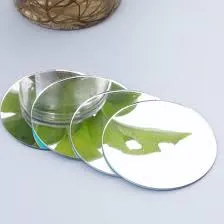

The Beauty of Frosted Glass A Transparent Narrative
In a world where aesthetics and functionality often intertwine, frosted glass has emerged as a popular choice in both modern architecture and interior design. This unique material, which balances transparency with privacy, offers a timeless elegance that captivates the imagination. With its delicate, diffused surface that scatters light rather than merely blocking it, frosted glass has become a symbol of sophistication and versatility.
At first glance, one might wonder what sets frosted glass apart from ordinary transparent glass. The answer lies in the treatment process that renders it opaque. Traditional glass can amplify stark contrasts of light and dark, creating a sometimes jarring effect in various settings. In contrast, frosted glass refracts light softly, producing a gentle glow that enhances any space. Its surface can be achieved through sandblasting, acid etching, or applying a special film, allowing for a range of textures and designs that further elevate its aesthetic appeal.
The Beauty of Frosted Glass A Transparent Narrative
Beyond its functional applications, frosted glass also lends itself beautifully to artistic expression. Designers often play with patterns and motifs, imprinting unique designs onto the glass to create focal points in various settings. Imagine a lobby adorned with a frosted glass mural depicting abstract forms that intrigue guests as they enter, or a dining room with a glass table topped with frosted accents that captures the essence of modern elegance. The possibilities are endless, allowing creativity to flourish.

Another important aspect of frosted glass is its ability to evoke emotion and atmosphere. In settings such as art galleries or museums, frosted glass can serve as a soft backdrop for artwork, directing focus without overpowering. The filtering of light creates a warmth that invites viewers to linger, enhancing their experience as they partake in cultural explorations. On a more personal level, frosted glass elements in areas like home offices or reading nooks can facilitate concentration and relaxation, reinforcing the significance of environment on mental well-being.
Sustainability is another reason individuals and designers are increasingly choosing frosted glass. As a material, it is often recycled and reused, making it a greener option in a world that is beginning to prioritize eco-friendly choices. By incorporating frosted glass into homes and commercial spaces, designers are not only creating visually appealing environments but also contributing to a more sustainable future.
Finally, the allure of frosted glass is perhaps most palpable in its ability to bridge the gap between indoor and outdoor spaces. Large windows or sliding doors made with frosted glass invite the outside in, bathing interiors in soft, diffused natural light while maintaining a sense of seclusion. This connection with nature can contribute to a sense of peace and well-being, as the rhythmic patterns of light and shadow play across surfaces.
In conclusion, frosted glass is more than just a functional material; it is a versatile element that enhances the aesthetic quality of spaces while providing privacy and emotional resonance. Its unique ability to balance transparency and softness makes it an enduring choice in contemporary design. Whether gracing the walls of a sleek office, the confines of a cozy home, or the walls of a dynamic gallery, frosted glass continues to inspire and transform the environments we inhabit. As we embrace modernity and the beauty of light, frosted glass remains a timeless testament to elegance and sophistication.